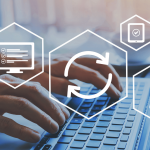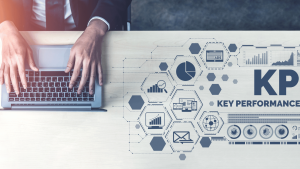To understand the importance and implications of cloud attendance management in the future, explore the definition of this technology and the significant role it will play. Delve into the benefits, challenges, and potential of managing attendance through the cloud, and its impact on businesses and workforce management.
Comprehending Cloud Attendance Management
Cloud Attendance Management is the future of tracking and managing employee attendance – using the power of cloud-based tech. It integrates with devices and platforms, giving real-time access to attendance data, plus automatic calculations and reporting.
Biometric authentication ensures accurate and reliable attendance, as well as eliminating buddy punching. And with integration with HR systems, payroll processing is streamlined.
Employees can view their own attendance data in real-time, promoting transparency and accountability. Supervisors and managers get valuable insights into workforce productivity, helping them make informed decisions.
Cloud Attendance Management brings many benefits like increased efficiency, cost savings, improved accuracy, enhanced security, and streamlined admin processes. Don’t miss out – embrace the power of cloud-based tech for superior attendance management. Who needs attendance when you can just blame your absence on a cloudy memory?
Importance of Cloud Attendance Management in the Future
Cloud attendance management is the way of the future for workforce management. It leverages cloud technology to streamline attendance tracking, reduce manual errors, and improve overall efficiency. Access attendance data in real-time, and get automated reporting for informed decisions. Plus, optimize resource allocation and ensure compliance with labor laws.
Cloud attendance management also offers enhanced flexibility for employers and employees. Remote work and flexible schedules are now the norm. With cloud-based systems, employees can clock in from anywhere, using their preferred device. This boosts work-life balance and increases employee satisfaction and productivity.
Cloud attendance management offers scalability and cost-effectiveness. No need for complex hardware or software installations. Flexible pricing models suit businesses of all sizes. Automatic updates give access to the latest features – no additional costs.
Stay ahead of the competition by implementing cloud attendance management. Streamline administrative tasks and focus on strategic initiatives. Get real-time notifications regarding absenteeism or late arrivals for prompt action and smooth operations.
Harness the power of cloud attendance management now and unlock its potential benefits. Don’t miss this opportunity to optimize your workforce management processes. Be proactive and stay agile while embracing technological advancements for long-term growth. The future is here – embrace cloud attendance management today!
Current Trends in Cloud Attendance Management
To stay ahead in cloud attendance management, explore the current trends in integrating biometric technology, managing remote workforce, and utilizing real-time data analytics and reporting. Embrace these advancements for a more efficient and accurate attendance management system, ensuring smooth operations and informed decision-making.
Integration with Biometric Technology
Integration of biometric technology has made a big difference in cloud attendance management. Biometric authentication methods make attendance tracking more accurate and secure. How does it work? Let’s explore!
Here’s a table showing some key features and advantages of biometric technology:
| Biometric Tech | Features | Benefits |
|---|---|---|
| Fingerprint | Reliable | No buddy punching |
| Facial | Non-contact | Quick & convenient |
| Iris | Accurate | Hard to forge |
| Voice | User-friendly | Great for remote working |
Fingerprint recognition ensures reliable attendance records, whereas facial recognition offers non-contact access, making it fast and easy for employees. Iris recognition adds an extra layer of security, as it is hard to reproduce an individual’s iris pattern. Lastly, voice recognition makes it user-friendly and perfect for remote working scenarios.
It’s clear that integrating biometric technology into cloud attendance management systems makes them more robust and efficient. Here are some tips to get the most out of it:
- Use Multi-factor Authentication: Combine different biometric authentication methods such as fingerprint and facial recognition to increase security.
- Make Sure It’s Scalable: Choose cloud attendance management systems that can handle growing organizational needs without affecting performance or security.
- Stay Up-to-Date: Update the software regularly to take advantage of improved security protocols and features.
- Train Employees: Educate employees about the benefits and proper usage of biometric attendance systems. This will increase adoption rates and reduce confusion or resistance.
By following these tips, businesses can make the most of integrating biometric technology into their cloud attendance management systems. The combination of strong authentication methods and successful implementation ensures accurate records, better security, and a streamlined attendance tracking process for businesses of all sizes. Managing a remote workforce is like herding cats – except they have Wi-Fi and opposable thumbs.
Remote Workforce Management
A table below displays the aspects of Remote Workforce Management.
| Aspect | Description |
|---|---|
| Time Tracking | Monitor and record time spent on tasks |
| Attendance Management | Keep track of employees’ attendance |
| Productivity Analysis | Analyze individual and team performance |
| Collaboration Tools | Provide tools for communication and collaboration |
| Employee Engagement | Strategies to keep remote employees motivated |
Remote Workforce Management helps with challenges faced by distributed teams. It keeps remote workers connected and engaged, in spite of physical distance. The right systems let managers communicate goals & expectations and offer support as needed.
Analyzing employee attendance data in real-time is like spying – no espionage or cool gadgets.
Real-Time Data Analytics and Reporting
Cloud attendance management systems powered by real-time data analytics and reporting provide instant insights on attendance patterns. These let businesses make timely decisions based on accurate data.
Features such as attendance tracking, punctuality analysis, overtime monitoring and leave request streamlining are not found in traditional methods. Leveraging real-time analytics gives businesses a comprehensive view of their workforce at all times. This lets them identify trends, tackle issues quickly, and optimize work schedules.
Real-time data analytics also make payroll processing accurate. This eliminates discrepancies and guarantees fair compensation.
Make the most of real-time data analytics and reporting in attendance management systems. Make wise decisions based on workforce insights and enjoy streamlined operations, improved productivity, and success in business! Get ready for a future where cloud-based attendance management means your boss knows more about your attendance than your shrink!
Future Trends in Cloud Attendance Management
To stay ahead in cloud attendance management, explore the future trends in this field. Embrace the potential of artificial intelligence and machine learning integration, leverage internet of things (IoT) connectivity, and benefit from advanced security and privacy features. These sub-sections offer solutions for efficiently managing attendance in the digital era.
Artificial Intelligence and Machine Learning Integration
AI and ML integration into cloud attendance management can bring many benefits. Such as predictive analysis for attendance patterns, improved resource planning, automated attendance tracking, time-saving and reduced errors, and enhanced accuracy and efficiency.
Predictive analysis allows employers to create more effective strategies to manage resources. Automating attendance tracking with AI eliminates manual tasks, saving time and reducing errors.
Real-time data updates enabled by AI and ML allow organizations to have immediate access to accurate attendance information. This helps decision-makers respond promptly to any changes or issues that may arise during the workday.
The use of AI and ML in attendance management is an example of how technology is revolutionizing workforce management practices. With IoT connectivity, AI can even manipulate the office thermostat to keep employees on their toes!
Internet of Things (IoT) Connectivity
The field of Internet of Things (IoT) Connectivity is growing quickly. By connecting devices and systems through the internet, organizations can manage employee attendance in real time. Let’s look at the key aspects of IoT Connectivity for cloud attendance management.
| Real-Time Data Collection | Seamless Integration | Improved Accuracy | Enhanced Security |
|---|---|---|---|
| IoT devices automatically collect attendance data, without manual processes. | Cloud-based attendance platforms integrate with existing IoT infrastructure. | IoT connectivity makes attendance records more accurate, reducing errors and fraud. | Access control systems with IoT connectivity give extra protection for attendance data. |
Plus, IoT connectivity lets you access attendance data remotely. It also allows integration with other business systems like payroll and HR platforms.
Organizations should try out IoT solutions for attendance management. Leverage tech to automate and streamline processes. Don’t miss out on this chance to revolutionize workforce management! Finally, a cloud attendance system with super secure passwords.
Advanced Security and Privacy Features
Cloud attendance management systems employ robust encryption techniques for data transmission and storage, to prevent unauthorized access. Advanced authentication methods such as biometric verification and multi-factor authentication add an extra layer of security. Access controls allow admins to define user roles and permissions, so each user can only view or modify relevant data according to their role.
Besides, security audits, monitoring, and updates identify and address potential vulnerabilities promptly. Plus, compliance with industry standards like GDPR boosts privacy.
A multinational corporation implemented cloud attendance management for global workforce’s time tracking. Advanced encryption algorithms and authentication measures ensured secure access across various regions without compromising on data privacy. This boosted efficiency and provided peace of mind knowing that sensitive information was protected.
Cloud attendance management systems will continually evolve, offering more advanced security and privacy features worldwide. These solutions not only improve operational efficiency but also assure organizations that their data is safe from potential threats.
For businesses and organizations, embracing cloud attendance management is like hiring a virtual bouncer. Except this bouncer never gets tired and has the memory of an elephant.
Impact on Businesses and Organizations
To gain a comprehensive understanding of the impact on businesses and organizations, delve into how cloud attendance management with increased efficiency and productivity, enhanced employee experience, and cost savings and resource optimization offers solutions.
Increased Efficiency and Productivity
Reduced Downtime: Streamlined workflow enables better time management; less downtime and more productivity. Employees complete tasks quickly without delays or disruptions.
Improved Communication: Efficiency promotes better communication. Teams collaborate, sharing information and ideas, leading to more effective problem solving and quicker decisions.
Optimized Resource Allocation: Increased efficiency allows resources, like money, materials and people, to be allocated more efficiently – output is maximized and waste reduced.
Enhanced Customer Service: Efficient organizations provide better customer service; faster response, accurate info, and successful issue resolution.
Innovation and Adaptability: Streamlined processes free up resources for innovation and staying ahead of competitors.
Employee Morale and Satisfaction: Efficiency leads to a positive work environment, making employees feel valued and motivated, boosting morale and job satisfaction.
Plus, companies that prioritize efficiency are more environmentally friendly, reducing waste and energy consumption. In today’s competitive landscape, not embracing efficiency can lead to missed opportunities. Organizations that don’t optimize processes may find themselves falling behind. It is essential to stay up to date with tools, technologies and methodologies that increase efficiency and productivity. Don’t get left behind – take action now and benefit from increased efficiency and productivity!
Enhanced Employee Experience
Enhanced Employee Experience includes flexible work arrangements. This gives employees more balance between life and work, leading to better job satisfaction and well-being. It also shows autonomy and trust in the company, as staff can manage their own time.
Clear communication is crucial for this experience. Regular feedback sessions and open dialogue creates transparency and understanding between employees and management. This boosts collaboration, plus innovation and creativity among teams.
Businesses can also help employee growth through training programs, mentoring, and professional development. Providing resources for learning helps staff stay updated with industry trends and develop new skills – for their growth and the organization’s success.
Pro Tip: To up the employee experience, implement wellness programs. These can include fitness, mindfulness, and counseling services. Caring for employee health creates a positive work environment where people feel supported.
Cost Savings and Resource Optimization
To cut costs and optimize resources, businesses aim for maximum efficiency. This involves analyzing operations to pinpoint where savings can be made and resources more effectively used.
Let’s look at a table of cost-saving and resource optimization strategies businesses use:
| Example | Cost Savings | Resource Optimization |
|---|---|---|
| Renewable Energy | Less electricity expenditure | Efficient use of natural resources |
| Telecommuting | Lower office space costs | Reduced carbon footprint |
| Cloud Storage | Decreased IT infrastructure costs | Streamlined data management |
| Lean Manufacturing | Minimized waste | Enhanced production efficiency |
| Outsourcing | Lower labor expenses | Allocation of expertise |
Renewable energy sources reduce electricity bills and help preserve natural resources. Telecommuting lets organizations downsize their workspace, reducing expenses and their carbon footprint. Cloud storage cuts IT infrastructure costs and streamlines data management. Lean manufacturing minimizes waste and increases production efficiency. Outsourcing tasks or processes reduces labor expenses and gives access to specialized expertise.
These examples illustrate the cost savings and resource optimization of businesses. By using such measures, organizations can improve their financial stability and environmental sustainability.
Lean manufacturing, originating from the Toyota Production System in Japan in the late 1940s, revolutionized manufacturing. It eliminates non-value-adding activities in the production process through waste reduction and continuous improvement. This approach boosted cost efficiency and resource optimization, leading many organizations to adopt similar strategies.
Revolutionizing Workforce Tracking with TimeCentral’s Time Cloud Solution
- Attendance Tracking with Geofencing & Geolocation: Ensure accurate and real-time attendance records with location-based tracking.
- Announcements: Communicate important updates and announcements instantly to all employees.
- Incident Reporting: Streamline incident reporting and ensure prompt resolution.
- Scheduling App: Efficiently schedule shifts and manage employee availability.
- Absence Management: Simplify and automate leave requests and approvals.
- Mobile App: Access all attendance management features on the go.
Experience the power of cloud-based attendance management with TimeCentral’s comprehensive Time Cloud Solution
Final Thoughts on the Evolution of Attendance Management Systems
Attendance management systems have changed the way organizations track and monitor employee attendance. They’ve become increasingly user-friendly and sophisticated over time.
As technology progresses, these systems have adapted to meet new needs. Moving from manual punch cards to biometric scanners, they provide accurate and efficient methods for tracking employee time and attendance.
Uniquely, attendance management systems can integrate with other HR software. This syncs attendance data with payroll software, saving time and reducing errors.
These systems are also more flexible and customizable. Organizations can tailor them to fit their own needs, whatever their industry or work environment.
As a real-life example, a multinational company was struggling with employee absenteeism. After implementing an advanced attendance management system, they identified patterns, addressed underlying issues, and improved overall productivity. This story shows the transformative power of a well-implemented attendance management system.
FAQs
Ques 1: What is cloud attendance management?
Ans 1: Cloud attendance management is a system that uses cloud computing technology to track and manage employee attendance. It allows businesses to efficiently record employee working hours, monitor attendance patterns, and generate real-time attendance reports.
Ques 2: What are the advantages of using cloud attendance management?
Ans 2: Cloud attendance management offers several benefits, such as remote accessibility, easy integration with existing HR systems, real-time data updates, automated calculations for accurate payroll, reduced administrative tasks, and improved efficiency in attendance tracking.
Ques 3: How does cloud attendance management ensure data security?
Ans 3: Cloud attendance management systems employ advanced security measures like data encryption, regular backups, user access controls, and secure server infrastructure to protect employee attendance data. Additionally, reputable cloud service providers have robust security protocols in place.
Ques 4: What trends are emerging in cloud attendance management?
Ans 4: Some emerging trends in cloud attendance management include mobile app integration for employee self-service, advanced analytics for attendance pattern insights, biometric authentication for accurate time tracking, AI-powered attendance prediction, and integration with other HR software for streamlined operations.
Ques 5: Can cloud attendance management systems handle complex work schedules?
Ans 5: Yes, cloud attendance management systems can handle complex work schedules. These systems allow customization of work shifts, multiple shift patterns, individual employee preferences, and exceptions based on rules defined by the organization.
Ques 6: Is cloud attendance management suitable for small and medium-sized businesses?
Ans 6: Absolutely. Cloud attendance management is highly scalable and suitable for businesses of all sizes. It offers cost-effective solutions, eliminates the need for on-premises infrastructure, and provides flexibility in managing attendance records without requiring significant upfront investments.






